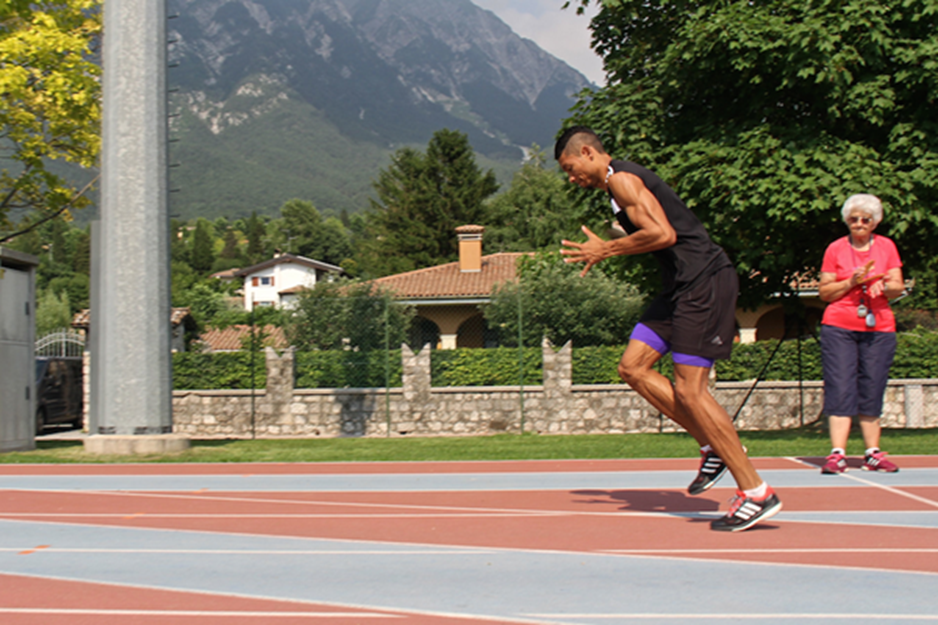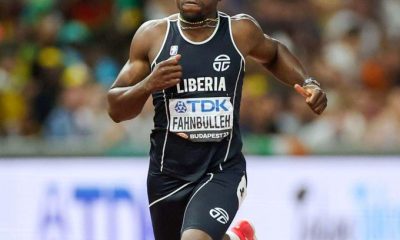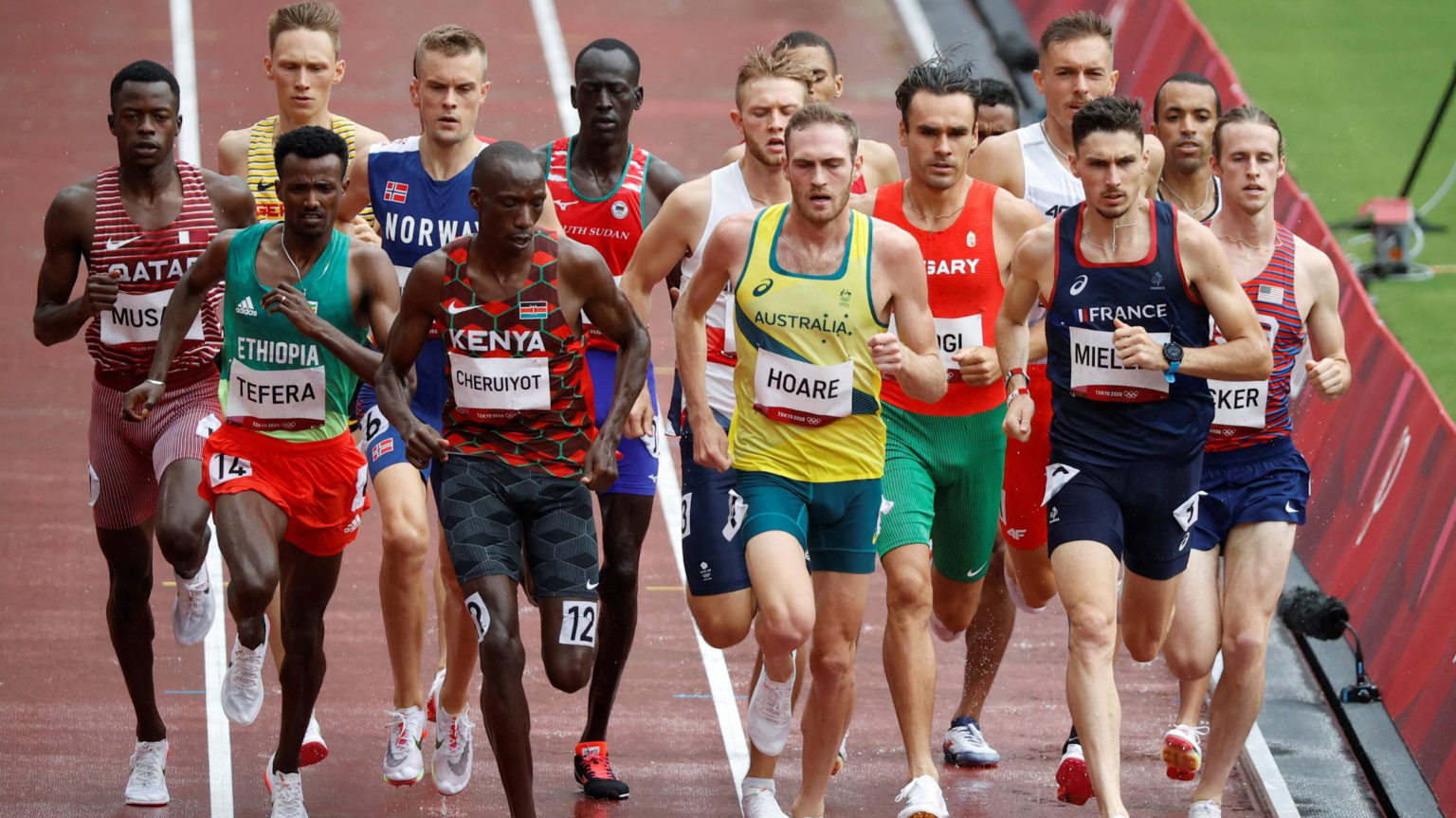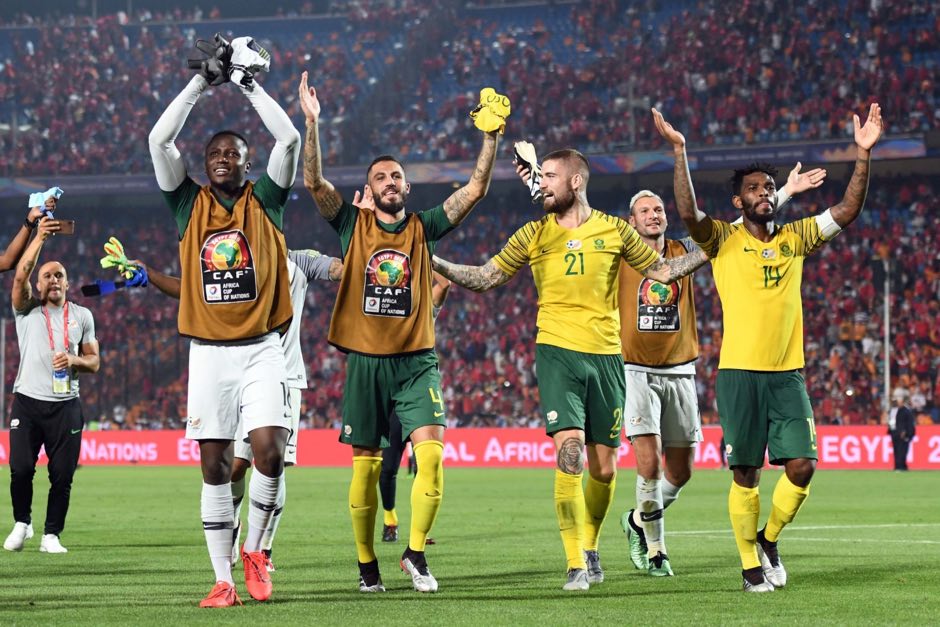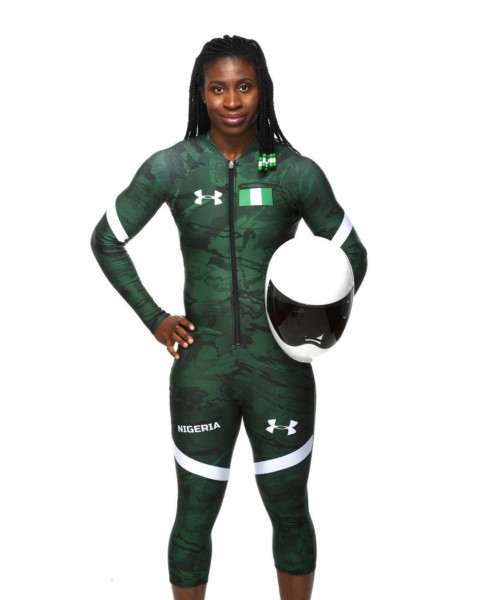The Aftermath
Watching from the back of the track, a seemingly mesmerized Usain Bolt quickly moved closer as if to catch a better look at what he sensed was about happen. In the blink of an eye, it was over. History had been made. The world’s fastest man held his hand over his mouth in shock of amazement as he paced back and fourth in short strides.
Meanwhile, an equally stunned commentator, and former 200 and 400-meter champion, Micheal Johnson exclaimed after he watched his 17-year-old world record get annihilated:
“Oh, my god. From lane eight, a world record. He took it out so quick, and I have never seen from 200 to 400 anything like that.”
He added: “That was a massacre by van Niekerk.”
The Explosion
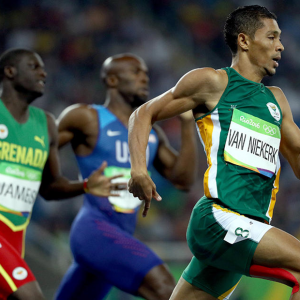
Before shaking the walls of the Olympics universe, van Niekerk appeared underwhelming in the heats and semi-finals. We know now that it may have been because of a niggle in his hamstring.
Regardless, at the blast of the starter gun, he exploded.
Running blind in the eighth line, he scorched track with blistering speed. Seasoned eyes wondered if his intense start was premature and if Kirani James, the defending champion from Grenada, and LaShawn Merritt of the United States would eventually catch up and outrun him after the first half of the race.
To the surprise of everyone, the opposite happened. He kept going faster and faster for the next 200 meters. So quick that he finished a solid five meters ahead of the London Games champion, James. It was an all-time great performance as the world record was shattered by .15 of a second. The new world record is now 43.03.
After the race, van Niekerk shared that he was “running blind all the way.”
“I thought someone was going to catch me — what’s going on, what’s going on? And it gave me motivation to keep on pushing,” he said.
The Great Grand mother that’s Responsible

(Photo Courtesy: IAAF Website)
After the 2012 London Games, van Niekerk met the 74-year-old Anna Botha, a great-grandmother of four with almost 50 years coaching experience. The two crossed paths when van Niekerk began his studies at the University of the Free State in Bloemfontein where she has been the head coach of track and field since 1990.
According to the IAAF Website, Botha was a long jumper and 100-meter sprinter in her youth and moved into coaching.
“It gave me a purpose in life, and I love to see young people develop and build confidence through achieving,” she said.
As per the website, Botha’s coaching style is centered on discipline and hard work with a slice of laughter and spontaneity. In regards to her personal philosophy, she believes “you are never too old to learn. I’m always trying new things, so it is never boring for the athletes. If I have a problem, I think about it and try to work something out to make it better.”
At Bloemfontein, Botha worked to switch Niekerk’s focus from 200 meters to 400 meters to shelter him from pesky injuries. As time went by his times steadily dropped, from 45.09 seconds in 2013, to 43.03 seconds at Rio.
After his race, the South African sprinter spoke multitudes of his “amazing” coach and how “she’s played a huge role” in who he is today.
“She’s really kept me very disciplined and very focused on the goal and where I need to be,” van Niekerk said. “I’m really grateful I can go on the track and say my coach has pushed me to reach every level and believe anything is possible.
“I’m grateful I could trust in her work, and I think it speaks for itself. What she’s achieved as a coach, I’m just thankful to be part of the history she’s made.”
Watching from the stands, Botha couldn’t be happier.
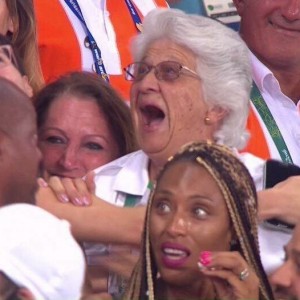
(Image: Female Coaching Network)
Featured Photo: Courtesy of IAAF Website
